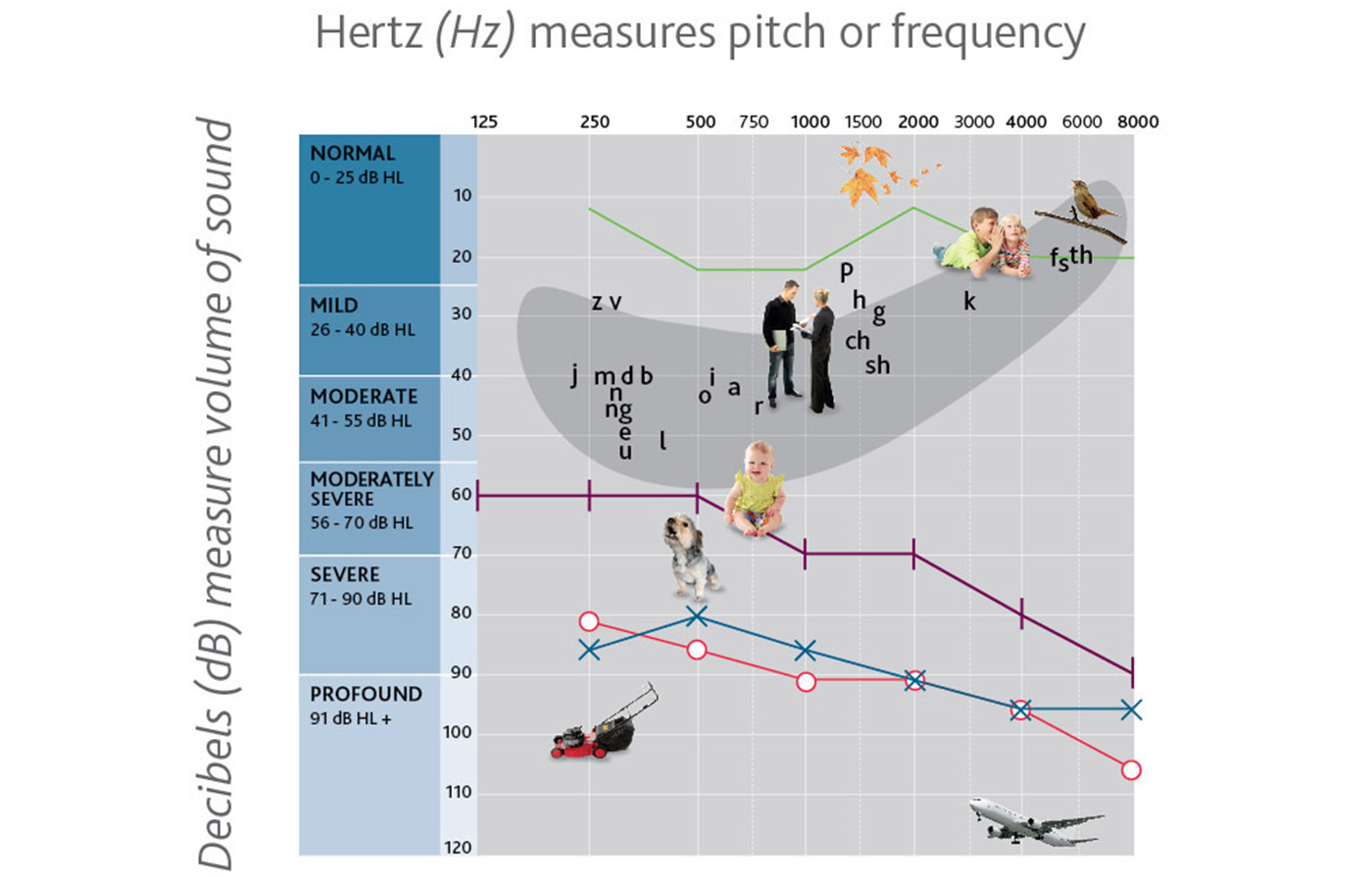Understanding the audiogram
An audiogram helps diagnose hearing loss. Learn what it is, why it's important and what it represents.

Page contents
- What an audiogram is and what it looks like.
- What an audiogram measures.
- What the results of an audiogram might mean.
What is an audiogram?
At a consultation with a hearing professional (audiologist or ENT), hearing tests are usually performed. An audiogram is a line graph that shows the results of these tests, giving a picture of how well the patient hears sound. It does this by plotting the quietest sounds that the patient is able to hear at a range of different pitches and frequencies.
This information then helps to diagnose the degree and type of hearing loss, and can help identify potential treatments.
An overview of an audiogram
The hearing professional will explain what each part of the audiogram represents, and discuss what the results mean for the patient.
Here is a brief summary:
The chart above shows a normal range of hearing at different volumes and pitches. The pictures and letters represent the kinds of sounds that typically fall within each range, from the very soft, like a whisper, to the very loud, like a plane.
The audiogram will show a graph with various lines and symbols. Each one represents a measurement of hearing.
Volume, or intensity, is measured in decibels (dB), marked from top to bottom on the chart.
Softer sounds, like the sounds of leaves rustling, start at the top of the chart. Louder sounds, like a lawnmower, measure a higher number of decibels and are depicted at the bottom of the chart.
Pitch, or frequency, is measured in hertz (Hz) and marked from left to right.
Each vertical line shows a different frequency of sound. The further to the right, the higher the pitch, like a bird chirping.
Red and blue lines and letters represent test results
A blue X line (left ear) and a red O line (right ear) show the results of the air conduction test (the level at which airborne sound can be heard, typically measured by playing sounds to the patient through headphones). Bone conduction test results are represented by a blue > line (left ear) and a red < line (right ear).
A difference between air conduction and bone conduction hearing is called an 'air-bone gap'. Having this gap may mean that the patient's hearing loss is caused by a problem in the outer or middle ear. If there is no gap, the hearing loss could be due to a problem with the inner ear (cochlea).
Speech recognition and speech discrimination tests
Another type of test, known as a 'speech recognition', or 'speech discrimination' test, is used to determine how well the patient can hear and understand normal conversation. The results are expressed as a percentage and might appear on the audiogram.
What do the results mean?
If the audiogram shows a problem, the hearing health professional will explain the type and degree of hearing loss and the best available treatments for it. He or she will also be able to answer any questions that the patient may have.
Find a hearing implant specialist
Disclaimer
Please seek advice from your health professional about treatments for hearing loss. Outcomes may vary, and your health professional will advise you about the factors which could affect your outcome. Always follow the directions for use. Not all products are available in all countries. Please contact your local Cochlear representative for product information.
For a full list of Cochlear’s trademarks, please visit our Terms of Use page.

